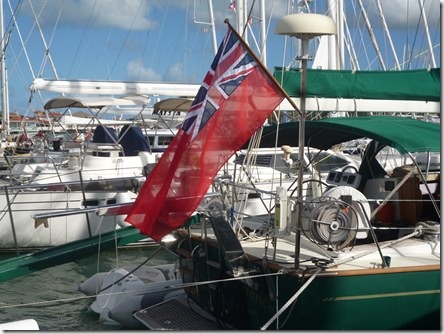to St Lucia

Ocean Science's blog
Glenn Cooper
Mon 5 Mar 2018 18:04
|
Monday morning sees us weighing anchor in the bay at Bequi and heading
north. We left at first light, at a time when the water in the bay was
surging - this was not local weather; it must have been a remnant of a storm out
at sea. There were 2 metre rollers crashing on the walkway where we had
been a few hours earlier. The masts on boats nearer the land were swinging
from side to side, and many were starting to move out to anchor in deeper water.
The previous night, our last on the charming island of Bequi, started with
a little trip ashore in our dinghy to an elegant bar on the waterfront with live
music. A couple of sundowners, then it was back to the boat for an evening
meal. For those who are interested, the menu was : ribeye steak
fried with garlic, saute potatoes, whole corn on the cob, cooked spinach, shiraz
and a fun-size Twix. No fancy desserts from Mike this time. The
steaks were monster.
More on St Lucia later, we are aiming to overnight there. In the
meantime, wind news is that it is sparse. We are motoring , with the
wind just off our bow, so no point in getting sails up. The winds have
been light over the last few days . Just before we set off from
Antigua the winds were fierce - around 30 knots. This was at the time of
the Caribbean 600 mile race out of Antigua, and of the 80+ competitors 40
retired, mainly due to the weather, and one big catamaran overturned (One old
joke here is that an overturned catamaran is in a condition of total
stability). When we set off the winds were around 15 kn,
nicely on our beam, but they soon started to ease, and now we have very
little. We are motoring up the coast of St Lucia. The main features
on the southern approach are two stacks called Petit Piton and Gros Piton,
around 2,500 feet high, but they are covered in cloud.
Not much happening here (except king-sized BLTs for lunch) so how about an
item on ensigns? We have a new red ensign, a flag which any British
ship can fly. Red is the entry level ensign. One rule of thumb is
that the ensign should be one inch for every foot of hull length. We are
60 feet, so on this basis the ensign is 60 inches, The ensign size is
measured diagonally. Like a TV set. For landlubbers, the
nautical emphasis on flags, ensigns, pennants and burgees is a bit of a closed
book. When we enter St Lucia waters we will run up the courtesy flag, a
miniature of their national flag. Also the Yellow Jack, or quarantine
flag, to show that we have not been cleared through landing formalities.
Plain yellow is Q in the flag alphabet. In a week or two Ocean
Science will be flying a far superior ensign. This is the white ensign,
which can be flown by the Royal Navy and also members of the august Royal Yacht
Squadron. Mike will be using the boat to take some people on a tour, and
some are RYS members. After than it will be back to basics.
 |